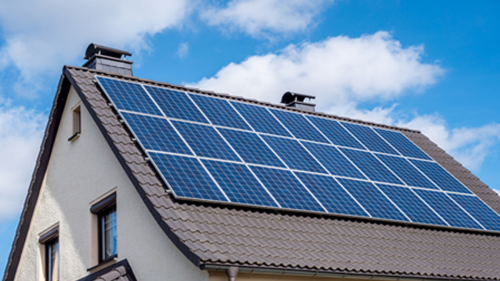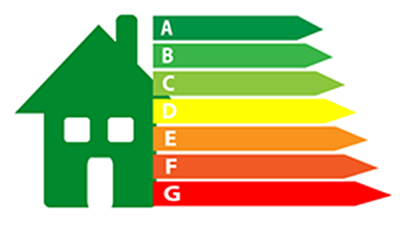ING Viewpoint June 2022


Steven van Rijswijk, CEO ING Group
Aligning mortgage lending with a net zero future
We see a growing demand from our consumers for green products. Developing products that will enable our customers to improve the sustainability of their homes will ultimately improve the quality of life in the communities we serve.
In Europe, residential mortgages are one of the key areas for the banking sector’s sustainability drive. We have approximately €320 bn mortgages outstanding, approximately a third of our balance sheet. This illustrates the scale of the challenge ahead.
I believe banks have an important role to play in initiating and driving this change. Greening our mortgages portfolio is key to ING Group’s sustainability strategy.
Steven van Rijswijk
CEO ING Group
Introduction
Banks play a key role in financing Europe’s transition to a net-zero economy. Mortgages can be a vehicle to finance greener homes, but they are also crucial in the banking sector’s own plans to go to net-zero, as in the Eurozone, 26% of all outstanding loans are backed by real estate (ECB).
Buildings account for 40% of EU energy consumption and 36% of energy-related direct and indirect GHG emissions (EC), two thirds of which can be attributed to residential housing. The importance of buildings is reflected in the EU’s Green Deal which introduced ambitious targets: reduce buildings’ GHG emissions by 60%, reduce general energy consumption by 14%, and by 18 % for heating and cooling specifically (EC), including by stimulating energy-renovations. The more recent REPowerEU plans further accelerate these ambitions.
More than 95% of EU buildings is currently not energy efficient (EPC below A) and the speed of renovation is low. Each year, only 1% of buildings undergo energy-renovation (BPIE). This is too little to reach the EU’s climate ambitions, and shows the need to address the transition of the existing building stock.
This Viewpoint explores how housing lending– which is by far the most common way of financing home ownership - can help with the transition, and what needs to be done to align regulatory and policy incentives stimulating the transition of European homes to become more green and defining what is ‘a green mortgage.
Existing product offering to green homes
In the European market, we identify different types of lending products that aim to stimulate greener homes. These products are typically tailored to homes that are already energy efficient. However, the majority of today’s housing stock is not energy efficient, as a consequence these products have limited effect on greening existing homes. The most common product being offered is:
- Mortgage discounts for already energy efficient homes (primarily label A and above).
Financial solutions facilitating the transition are being developed, examples are:
- Favorable lending conditions and mortgage refinancing options for energy renovations.
- Cash back solutions when borrowing for green home improvements.
A key challenge is thus to develop policies to green existing homes, whereby affordability should be taken into consideration as home owners may not be able to finance the required measures. Consumers also need to be informed about the financial benefits and the available technologies involved. In all of this both mortgage lenders and governments have a critical role to play including through public-private partnerships (see box 2).
The need for a “Green Mortgage” definition
There is currently no uniform definition of a green mortgage. A definition is essential for communication towards consumers and investors, and it can act as a barrier against greenwashing. A common definition, linked to the EU taxonomy criteria for buildings, will also help to create more clarity on applicable provisions in EU financial legislation.
- Mortgage Credit Directive: Rules applicable to granting mortgage loans, that currently do not include a definition of green mortgage.
- CRR 3: Policy makers are considering the prudential treatment of environmental risk, including the impact of energy-renovations on valuation and a low risk treatment for energy performance certificate of A+ or A.
- Energy Performance of Buildings Directive: regulates the EPCs and prescribes how the energy performance of a building needs to be calculated (taxonomy aligned)
- Applicable taxation and subsidies: incl. the use of EU support programmes, e.g. EU Recovery and Resilience Fund
How to drive the green mortgage transition: specific recommendations
Policy makers, mortgage lenders, and consumers all have a role to play in greening housing. As the biggest challenge is greening the existing building stock, a comprehensive approach is needed.
Recommendations:
- Mortgage lenders can promote the up-take of energy saving measures in collaboration with partners, advisors and intermediaries. Encourage that mortgages lenders for houses with E, F and G labels include a renovation plan.
- Establish an EU-wide definition of what constitutes a green mortgage based on a proportionate taxonomy alignment. We propose to focus on the most impactful taxonomy criteria for mortgages, such as A+ or A label or two label steps improvement (30%). To ensure full assessment of Taxonomy-alignment whilst taking proportionality, costs and limited availability of property-specific required data in account, the use of proxy values should be encouraged. This would prevent excessive costs and operational burden on consumers and financial institutions, and enable Taxonomy-alignment assessments for a larger part of residential properties.
- Provision of data on actual energy usage to public institutions and service providers. Energy efficiency is not the same as low or clean energy use. Energy efficient homes can have high energy usage depending on human behaviour. To really take into account actual and type of energy use banks would need access to their consenting clients’ usage data. Energy usage should be a priority in a future EU open data strategy. This would help mortgage lenders develop financial products that drive the transition to lower energy use
- Subsidise the uptake of Energy Performance Certificates (EPCs). Effective green finance solutions for homes depend on the availability and quality of EPCs. The ECB also concluded in their recent targeted review of commercial real estate that without accurate EPC data, banks cannot set their strategy and targets based on quantitative targets, nor can they progress in loan pricing, classification and credit risk management cycle. Whilst we expect the quality of the EPCs to increase after the revision of the EPBD, acquiring such certificates remains costly for consumers. In order to stimulate uptake, governments could subsidise acquiring these labels and make them mandatory in the context of renovation or sale.
- When a home is sold, making it mandatory for appraisers to develop a cost assessment for renovation according to a standardized cost assessment methodology and review, mapping future renovation costs needed to transition towards higher EPC ratings. Lenders have to link financing options to these transition plans.
Conclusion
The current housing stock urgently needs greening as only a very small percentage is energy efficient. If we join forces between the private and public sector and clearly define what can be considered as green mortgage, only then we can come to a meaningful and measurable transition of the European housing market.


